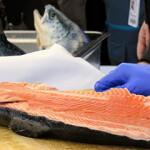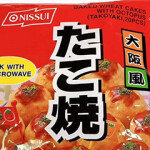In bid to survive, legacy fishing family to open San Francisco floating fish market
Just a few decades ago, hundreds of fishing trawlers combed the California coast, scooping up fish for local markets. Today, just a handful do so, and the markets are inundated with cheap imported seafood.
And fishermen like Giuseppe Pennisi, whose family has fished off California’s coast since the early 1900s, struggle to make ends meet.
“Talk about a disappearing fleet. It’s almost gone,” Pennisi, a groundfish trawler, told SeafoodSource.
In a bid to survive as a fisherman, Pennisi is launching a floating fish market on San Francisco’s Pier 47, in a partnership with the seafood restaurant Scoma’s, which has a fish-receiving station on its pier. On his boat, Pennisi has built a self-contained fish market, with portable scales and unloading equipment.
Pennisi said the National Oceanic and Atmospheric Administration is currently finalizing his first receiver license so that he can sell fish right off the boat – the first trawler with such a license. Quota rules for the West Coast groundfish fishery still require an on-board observer and dockside catch monitor, however.
Many U.S. and California fishermen like Pennisi are struggling to comply with costly regulations absent in many other countries.
“We just can’t compete with all this fish coming from foreign countries. Our fish has lost its market,” he said. “The craving for fresh, local seafood is pretty strong, but most of these markets cater to the foreign fish because of the price.”
In Monterey, where Pennisi is based, fishing has gone through highs and lows for decades. In the 1980s, rising numbers of boats were all striving to catch a limited quota, driving a collapse in the groundfish stock. Fishermen lost jobs, processing businesses closed and markets turned to imported fish from Alaska, China and elsewhere.
“Now it’s hard for fishermen to get back into the market,” Sherry Flumerfelt, the executive director of the Monterey Bay Fisheries Trust, told SeafoodSource.
Better management and less harmful gear have revived the West Coast groundfish fishery, but the infrastructure and markets to process and sell the fish haven’t returned. Meanwhile, fishermen have to pay to comply with regulations; observers, for instance, cost USD 500 (EUR 475) per day.
“These guys are making massive investments to participate in these highly-regulated fisheries. And consequently, the stocks are doing great,” Flumerfelt said.
But American eaters often don’t care for more than a few kinds of fish – salmon, tuna, shrimp and tilapia – and imported fish are inevitably cheaper. Smaller towns don’t have processors to cut the fish as larger retailers require.
Seafood advocates in Monterey, led by Flumerfelt, see a way out: establish a fish hub that aggregates local seafood and tells its story. Rather than pouring local fish into a global supply chain that drives prices to the bottom, fishermen would be able to link their fish to sustainable practices and the coastal culture that towns like Monterey prize.
The phrase “fish hub” conjures up images of Pike Place in Seattle, but it could take a variety of forms, Flumerfelt said. Some food hubs are simply online aggregators used to connect producers with markets, while others involve large warehouse and retail spaces with refrigeration, trucking, marketing and a public market.
“It really depends on the community’s needs and what the infrastructure is,” Flumerfelt said.
Food hubs elsewhere have helped farmers and specialty food producers reach larger markets, raising community awareness and maintaining the story of the local produce and animal products.
A fish hub in Monterey would broaden markets for fishermen like Pennisi, who wants to bring his floating fish market to Monterey, but can’t yet because the city lacks the infrastructure.
Pennisi aims to tell the story of his fish by streaming a video feed of his boat online, and allowing customers to track its location. He also uses innovative fishing gear he’s designed himself to reduce bottom contact by 95 percent and shrink bycatch to a fraction of a percent – ensnaring only the large fish that restaurants want.
Pennisi hopes that his floating fish market – and possibly the fish hub in Monterey – will allow him to better brand his fish and charge more for them, rather than selling them for rock-bottom prices to foreign buyers.
“I just can’t believe that here I can’t get my own fish across the dock to a local place,” he said. “But you can get it across the dock and freeze it and ship it halfway around the world. It makes no sense.”






Share